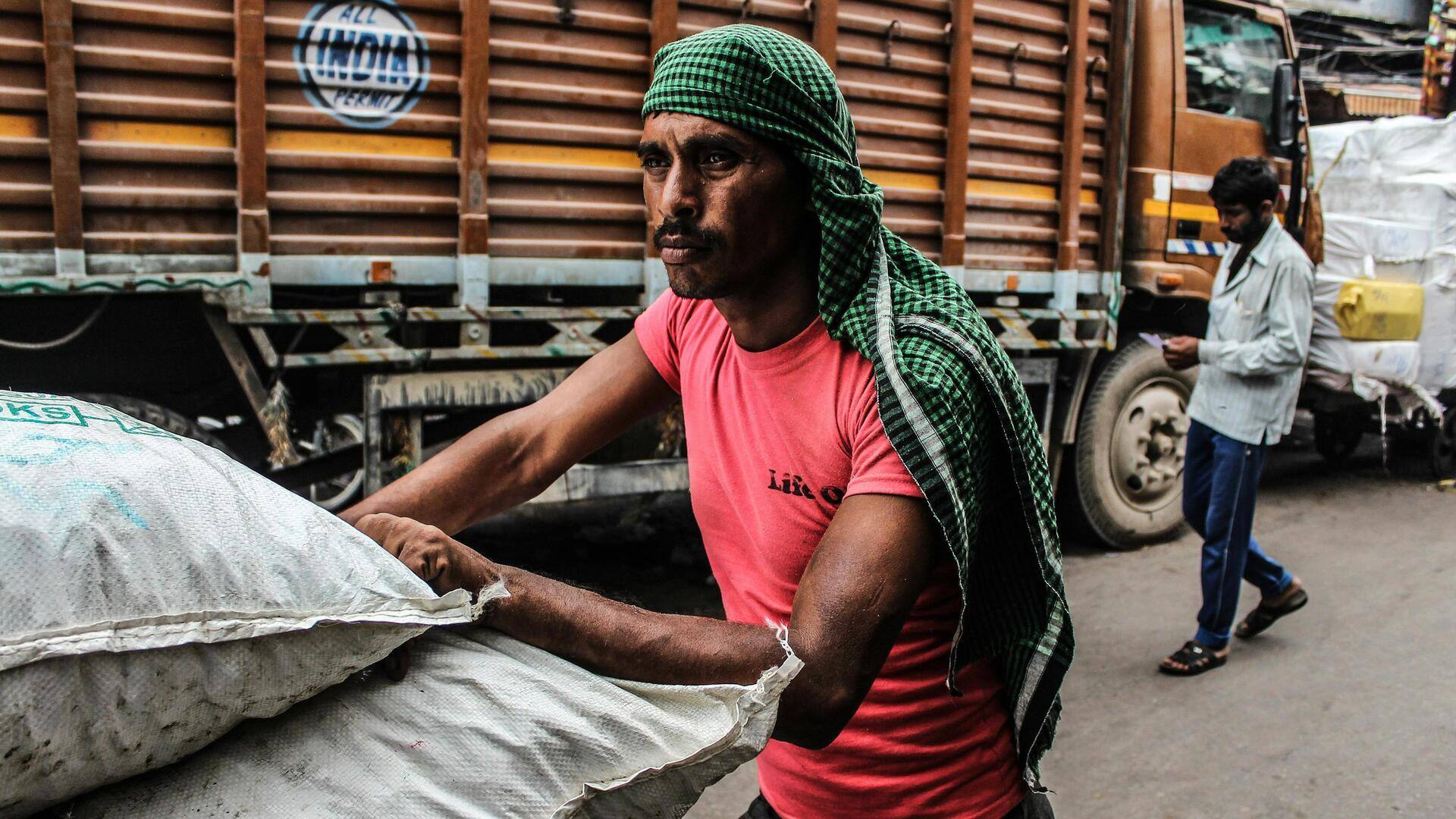
Explained: India's planned transition from minimum wage to living wage
What's the story
India is contemplating a major wage policy overhaul. By 2025, the country plans to transition from a minimum wage system to a living wage system, Economic Times reported. To achieve this, the Indian government has sought guidance from the International Labor Organization (ILO) to develop an effective framework for the new wage system. The move came after the ILO endorsed the idea of a living wage earlier this month, and its governing body subsequently endorsed the concept on March 13.
Context
Why does this story matter?
A living wage system gains importance in light of recent reports indicating a significant increase in inequality in India since the early 2000s. To put things in perspective, 22.6% of the national income went to the top 1% of Indians in 2022. Although government records show that poverty levels have decreased, income inequality serves as a harsh reminder of the disparities between rich and poor. To address this inequity, India requires a more thoughtfully planned pay system.
Aim
The potential impact of living wage: Alleviating poverty
The shift from minimum wage to living wage is aimed at uplifting millions of Indians from poverty and enhancing their quality of life. India's workforce is vast, with over 500 million workers, and a staggering 90% are employed in the unorganized sector. Many of these workers earn a daily minimum wage of Rs. 176 or more, a rate that has remained unchanged since 2017 due to inconsistent enforcement across states, resulting in uneven wage payments.
Insights
The road ahead: Implementing living wage amid challenges
In an attempt to do away with the uneven wage payments, India passed the Code on Wages in 2019. The Act establishes a universal wage floor that will apply to all states once implemented. However, this code, which is applicable to all states, has yet to be implemented. Similar to the difficulty in implementing the Code on Wages, implementing a national living wage framework across states with varying costs of living looks to be extremely challenging.
Challenges
What are the challenges in implementing the policy
Some businesses, particularly small and medium enterprises, may face financial strain due to increased labor costs. Another key challenge is the disparity in living costs. The cost of living varies greatly between cities, states, and even districts, making it difficult to establish a standardized living wage. But if India does manage to replace the minimum wage with living wages, workers are expected to earn more. "We could go beyond minimum wages in a year," an official told ET.
Officials
India striving toward achieving sustainable development goals by 2030
With the standardized living wage in mind, India has asked the ILO to help it with "capacity building, systemic collection of data, and evidence of the positive economic outcomes resulting from the implementation of living wages." "New Delhi is striving toward achieving sustainable development goals...by 2030, and there is a view that replacing minimum wages with living wages could fast-track India's efforts to pull millions of its people out of poverty while ensuring their wellbeing," the newspaper reported, quoting officials.
Next step
India's robust economic growth rate of 8.4%
As of now, the path ahead appears promising, with India's robust economic growth rate of 8.4%. In 2023, the national floor-level minimum wage (NFLMW) was Rs. 178 per day or higher, depending on location. This was after the Centre raised the NFLMW by 10% in 2017. Currently, the living wage is voluntary, unlike minimum wage, which is mandated by law. It may, however, become necessary if the government sets the minimum wage at the living wage level.
What is
What is living wage and minimum wage
The ILO defines the living wage as "the wage level necessary to afford a decent standard of living for workers....taking into account the country's circumstances and calculated for the work performed during normal hours." In contrast, the minimum wage is the lowest amount of payment that companies are obligated by law to pay their employees for labor completed over a specific period. The minimum wage in India depends on the state, worker skill level, and the nature of their profession.